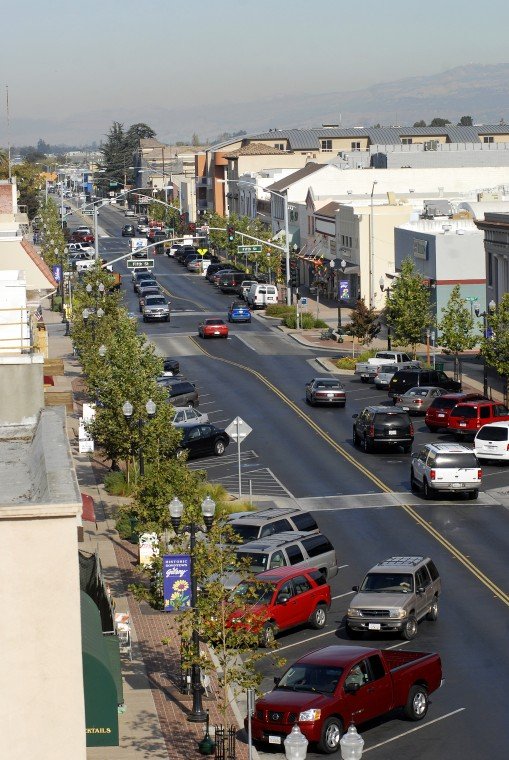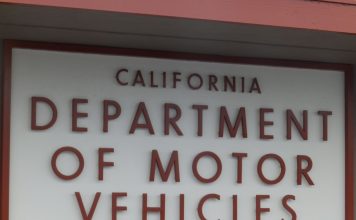
GILROY—Downtown Gilroy’s more than decade-long struggle to fill empty storefronts may have reached an all-time low—nearly one in three stores are vacant, according to a city survey.
High vacancy rates increase the perception that the downtown is not viable for businesses, property owners say, and so they are teaming with City Hall in an effort to attract businesses to the historic downtown that on March 12 of this year marked, without fanfare, 145 years of incorporation.
Fifty-five out of 200 downtown tenant spaces are vacant, the survey found.
The city’s development center manager, Lee Butler, presented his downtown business attraction strategy to the Gilroy City Council Monday, expressing a need for more collaboration between business groups like the Chamber of Commerce and Welcome Center.
“Consistent with successful downtowns throughout the country, Gilroy’s downtown should focus on attracting restaurants, entertainment and specialty retail,” Butler said, noting that hotels are also a vital component to success.
But some critics call the “strategy,” which outlined the need for an increased social media presence promoting all of downtown, anything but.
In his report, Butler pointed out the need for an economic study of what businesses are successful downtown, and what types could benefit the area.
But the city is not proposing to pay for a market analysis at this point in time. Rather than wait, a downtown developer says he will pay for the study out-of-pocket.
“If we don’t have a marketing and economic study, we’re just flailing in the wind,” said Gary Walton, a downtown property owner and activist working to bring in new businesses. “We need a vision based on a study.”
An existing inventory of businesses, market data and demographic information is critical to understanding the best way to fill Gilroy’s empty buildings, he said.
The first step in the city’s plan, as proposed by Butler, is to get all of downtown Gilroy’s stakeholders in the same room. That includes the Gilroy Downtown Business Association, the Gilroy Chamber of Commerce, the Gilroy Economic Development Corporation and property owners.
“I think this is a great start. It should have come two years ago but it didn’t,” Mayor Don Gage said, of Butler’s proposal. “Now, let’s not fool around and let’s do it. It’s going to take a lot of work and maybe a little bit of pain sometimes, but the ultimate goal is to build a better community so people want to come here.”
“It’s time we get serious and focus on this, as we did with the (unreinforced masonry buildings),” Gage said.
But the city’s approach to its unreinforced masonry problem has also ruffled some feathers. Gage argues that the fines and liens instituted on delinquent property owners two years ago forced them to the table.
Walton, an outspoken critic of the city’s URM ordinance, said he believes the city shot itself in the foot. The blight problems the city faces are all self-inflicted, the result of poorly executed policy, he said.
Many downtown businesses closed down after the city paid for a reconstruction of the entire downtown streetscape in 2004. In 2013, the city took a hard line stance with property owners who didn’t bring their buildings up to the state’s stringent earthquake safety codes for unreinforced masonry and began fining them.
While progress is being made and URM buildings are being fixed, Walton believes the city has lost sight of the ultimate goal—getting the downtown buildings up to code, occupied and operational.
“It’s been a lot tougher than it needs to be,” he said. “I didn’t get involved in this to make sure the city gets their fees, I did it so the buildings could get fixed.”
The key to downtown revitalization is fixing up the URM buildings and getting them occupied but that, he said, will take leadership.
“Clearly, this is a big undertaking to try to gather all those people, all those stakeholders, and come to some consensus,” Council Member Cat Tucker said.
Executive Director of the Gilroy Welcome Center, Jane Howard, noted that she would be looking to “see who takes the lead on this.”
Back in council chambers, Tucker questioned Butler, asking if he believed the city should lead the effort to revitalize downtown.
City Administrator Tom Haglund responded, saying he envisions the city “playing the role of convener” in all this.
“At the same time…we’re also recognizing our own limitations. The private enterprises that are the main stakeholders in the business environment downtown have to be willing to take over in some way,” he said.
In an attempt to make downtown more attractive, Haglund explained the city introduced an ordinance that requires property owners keep their storefront windows clean and free of dust.
But that doesn’t treat the root of the problem—empty buildings, some of which cannot be occupied until they’re retrofitted to meet earthquake safety codes, Walton observed.
“You can keep your lawn perfectly manicured, but if half the houses on your block are empty and the landscaping is dead, your value is not going to be the same if everything was taken care of,” he said.
City officials and community groups plan on meeting within a month or so to begin developing a unified plan.
“You can keep your lawn perfectly manicured, but if half the houses on your block are empty and the landscaping is dead, your value is not going to be the same if everything was taken care of.”
-Gary Walton, downtown activist and property owner












